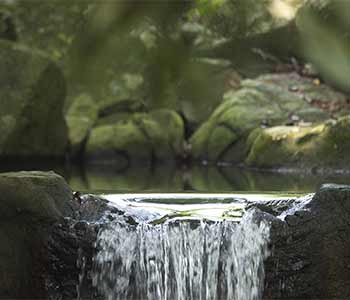
On the CO2 emissions of water in plastic bottles
How much smaller the footprint of tap water is compared to water in plastic bottles was recently reported in the media. Reason enough to take a closer look at the topic.
August 2021
Quicktranslation with DeepL
A few years ago, on the beautiful island of Mallorca, I became aware of the vast quantities of plastic water bottles that must be consumed by the 13,790,000 holidaymakers there annually. An incredible 1.5 million plastic bottles were consumed daily on the Balearic Islands of Mallorca, Menorca, Ibizia and Formentera until the Corona crisis. That's 547.5 million plastic bottles a year! Now I recently read in an Austrian daily newspaper how the CO2 emissions of PET bottles compare to tap water. I could no longer find the article, but in my clever book "How bad are bananas?" by Mike Berners-Lee I found what I was looking for.
Lee writes that from 2010 to 2020, the global consumption of water in (plastic) bottles almost doubled - from 200 billion to 390 billion litres per year. This accounts for a quarter of a percent of the world's carbon footprint. This makes it 1,000 times more CO2-intensive than tap water if you live in a country where such can be drunk.
One litre of tap water emits:
* 0.4 g CO2e
And
* 18 kg CO2e are caused by the annual water consumption of a typical Briton or just under 19 kg of an Austrian which means a daily drinking water consumption of 130 litres (incl. water for cleaning, watering the garden, filling the pool, ...)
One plastic litre bottle of water emits:
* 320 g CO2e at source and distribution
* 400 g CO2e average
* 480 g CO2e after just under 1,000 km of transport by road
The emissions come mainly from packaging and transport, the processing (still, medium, sparkling) is negligible. For the plastic bottle alone, 83 g CO2e are added, and another 20 g CO2e to melt the PET balls and form them into bottles. Since water is heavy, there are high emissions during transport, namely 80 g CO2e per litre bottle and 1,000 km.
This means that with the daily consumption of a plastic litre bottle of water alone, we would have wasted 175.2 kg of CO2e per year. Not very smart, considering that we are supposed to be aiming for a 5 tonne budget per capita globally. And that's not even talking about plastic waste and its impact. Apart from the fact that good tap water, as we have it in Austria and many other landlocked countries, tastes much fresher and better and has no plastic taint.




